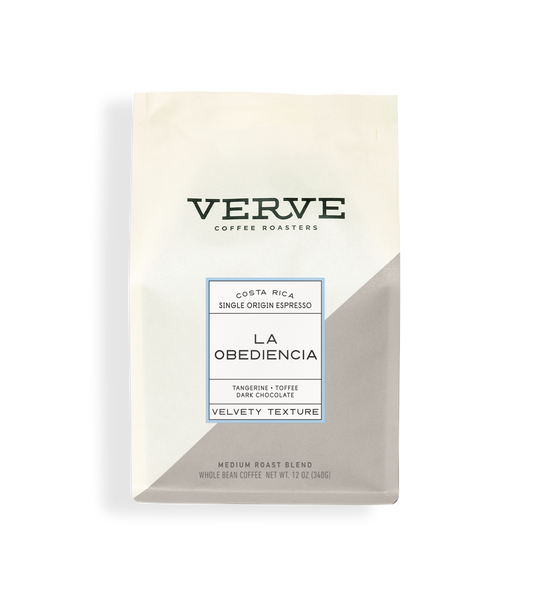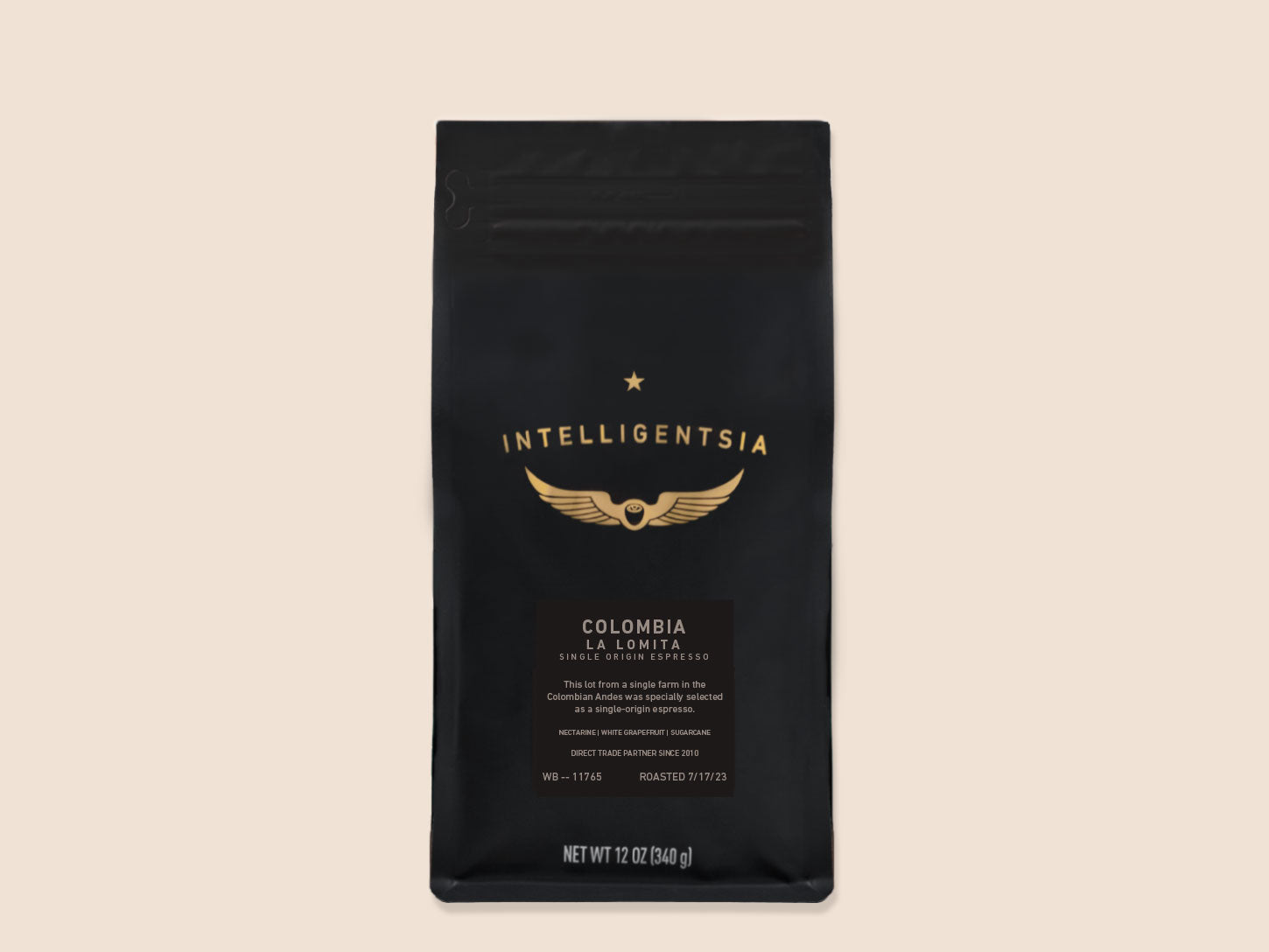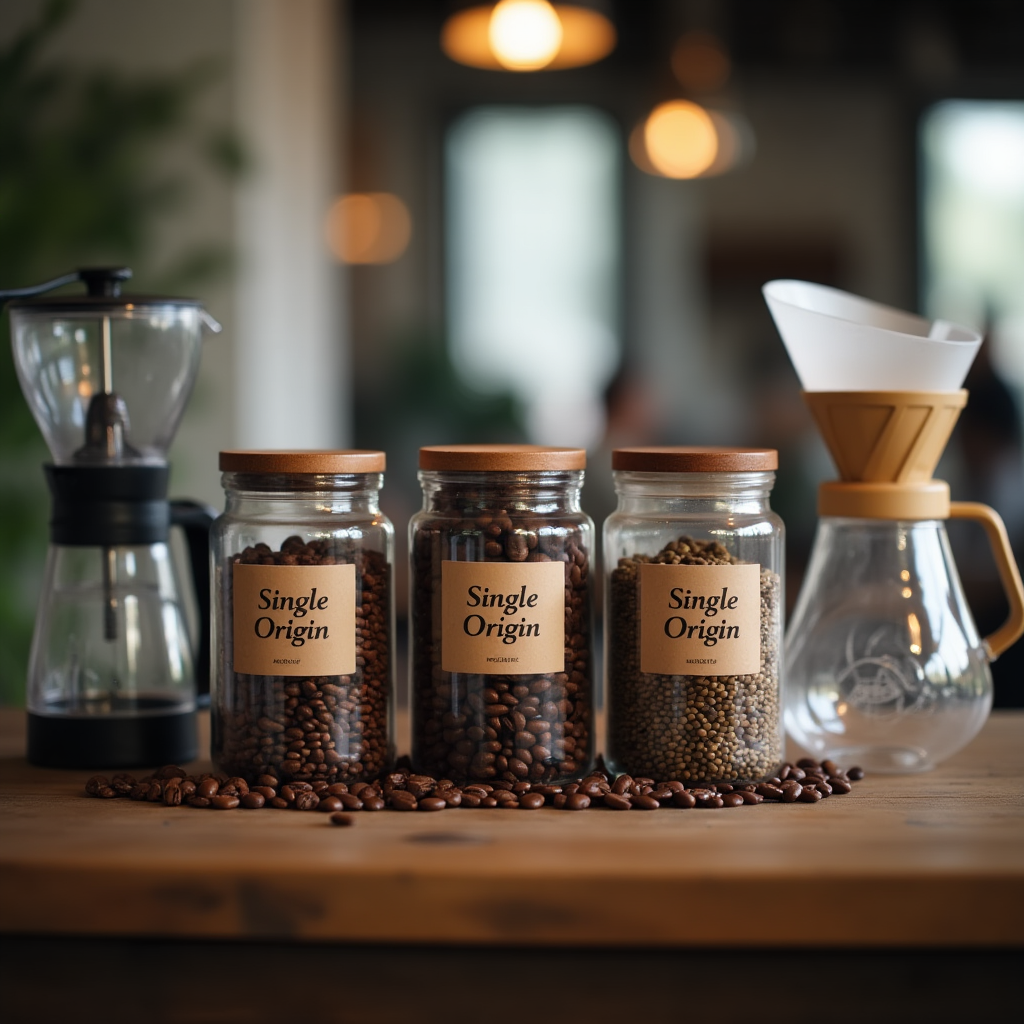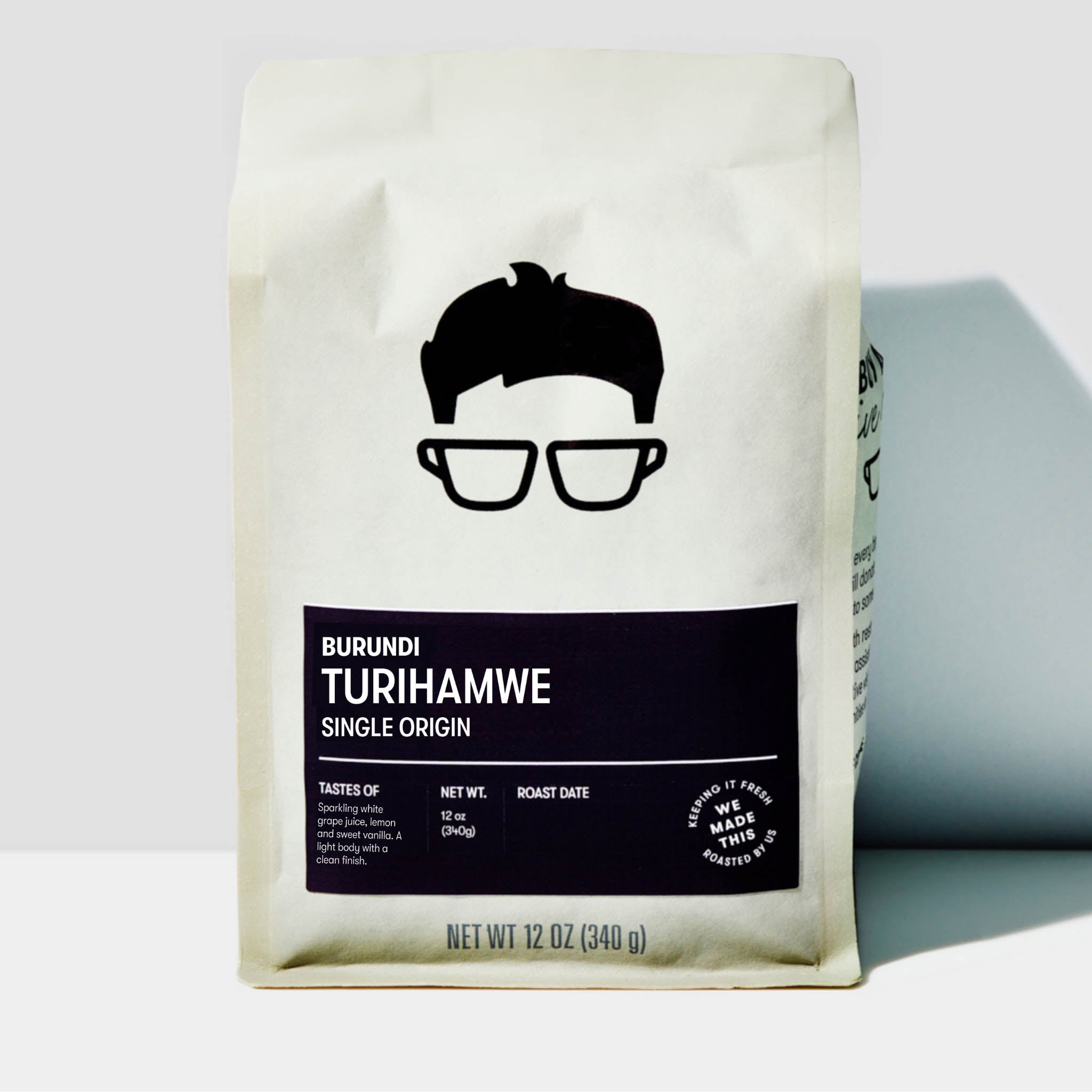Recognizing Coffee Beans: the Journey From Espresso to Blended Coffee Beans

The Origins of Coffee: A Global Perspective
While you might believe of coffee as a contemporary staple, its beginnings trace back centuries, linking with cultures throughout the globe. The story begins in Ethiopia, where legend says a goat herder called Kaldi uncovered the invigorating effects of coffee beans after discovering his goats frolicking vigorously after consuming them.
As profession routes increased, coffee made its means to Europe in the 17th century, quickly obtaining appeal. It transformed from a mystical drink right into an everyday ritual, motivating celebrations and intellectual exchanges. Each society added its unique spin to coffee prep work, enriching its history. This global trip highlights exactly how coffee links us, going beyond boundaries and joining varied practices with a straightforward bean.
Farming and Harvesting of Espresso Beans
As coffee's journey advanced, the focus moved to the farming and harvesting of particular bean selections, particularly those used for coffee. You'll find that espresso beans usually come from Arabica or Robusta plants, each offering distinctive tastes. The suitable expanding problems include high elevations and abundant, well-drained dirt, which improve the beans' top quality.
Throughout the harvest, selecting techniques vary. In some areas, workers hand-pick ripe cherries, ensuring just the finest fruit mosts likely to processing. In various other areas, mechanical harvesters are made use of, especially on larger farms. When the cherries get to peak perfection for maximum flavor., timing is crucial; you want to harvest.
As soon as gathered, the beans are prepared for handling, which is crucial in identifying their last preference. Recognizing the farming and harvesting processes offers you understanding into what enters into your preferred espresso, enriching your admiration for each and every mug.
Processing Techniques: From Cherry to Bean
Since you have actually learnt more about collecting coffee beans, allow's explore just how those cherries transform into the coffee beans you like. You'll see exactly how different harvesting strategies influence flavor, followed by the vital steps of fermentation and drying. Lastly, we'll damage down the milling and grading process that identifies your coffee's quality.
Collecting Techniques Explained
When it comes to coffee, comprehending harvesting methods is necessary, considering that they directly affect the flavor and high quality of the beans you appreciate. Selective picking includes hand-picking only ripe cherries, ensuring you get the ideal quality beans. Inevitably, the selection of gathering strategy can considerably influence your coffee experience, so it's worth recognizing how those beans made it to your mug.
Fermentation and Drying
After gathering, the next action in processing coffee beans play a substantial function fit their flavor. You'll locate that fermentation is vital, as it assists damage down the mucilage bordering the beans, boosting their preference profile. Depending on the approach, this procedure can last from a few hours to several days, with differing results based on temperature level and humidity.
Sun-drying enables the beans to take in tastes from the environment, while mechanical drying guarantees constant wetness levels regardless of climate. Proper drying is necessary to protect against mold and mildew and preserve the beans' quality, ultimately affecting your mug of coffee.
Milling and Grading Process
As fermentation and drying set the phase for taste advancement, the milling and grading procedure assurances that only the most effective coffee beans make it to your cup. This stage entails eliminating the external layers of the coffee cherry, consisting of the parchment and husk. After milling, the beans are arranged by size and weight, guaranteeing a consistent top quality. You'll find that grading assists determine defects and classify beans, which affects taste and aroma. Top quality beans get a greater grade, resulting in a richer coffee experience. As soon as rated, the beans await product packaging and shipping, maintaining their special characteristics. This careful procedure is necessary for providing the exceptional taste you enjoy in every sip of your favored mixture.
Roasting Methods: Opening Flavor Possible
When you roast coffee beans, the technique you pick can substantially affect the flavor profile. Recognizing the connection in between time, temperature, and toasting methods is crucial to exposing the possibility of your brew. Allow's check out how these aspects integrated to produce the excellent cup.
Toasting Approaches Discussed
While you could think that all coffee roasting methods produce the very same results, the truth is that each method reveals distinct flavor potentials in the beans. You can pick in between methods like drum roasting, air roasting, and even standard frying pan roasting. Drum roasting makes use of a turning drum to equally disperse warm, improving caramelization and producing a well balanced flavor. Air roasting, on the other hand, circulates warm air around the beans, promoting a lighter roast with obvious acidity. Frying pan roasting enables for hands-on control yet calls for consistent attention to avoid burning. Each method has its nuances, so explore various techniques can help you uncover the excellent roast that straightens with your preference choices. Enjoy the trip of locating your ideal mug!

Effect On Flavor Profile
Various roasting techniques not only influence the process however additionally considerably influence the flavor profile of the coffee beans. Dark roasts, on the various other hand, bring out bold, smoky flavors, often masking the bean's unique attributes. Understanding these subtleties assists you value the creativity behind your mug of coffee, enhancing your general experience with every sip.
Time and Temperature Factors
To release the full flavor capacity of coffee beans, both time and temperature level during the roasting process play considerable roles. When roasting, you'll locate that greater temperature levels can swiftly create tastes, but if you hurry it, you may wind up with burnt notes. On the other hand, reduced temperatures enable a more progressive flavor advancement, showcasing the beans' one-of-a-kind attributes.

Timing is equally as important; expanding the roast too long can bring about a loss of acidity and illumination, while as well short a roast could leave the beans underdeveloped. Discovering that pleasant area calls for method and experimentation. By readjusting these variables, you can reveal the abundant, complex flavors hidden within each bean, creating an absolutely impressive coffee experience.
The Art of Blending: Crafting Unique Coffee Profiles

Begin by choosing a base coffee that provides a solid structure. Choose complementary beans to enhance certain taste notes. A brilliant Ethiopian bean can bring fruitiness, while an abundant Brazilian coffee includes body. Testing is vital-- don't be worried to change proportions until you discover your perfect account.
As you mix, bear in mind that each mix informs a tale. You're not simply making coffee; you're creating an experience. Take your time, taste frequently, and delight in the journey of finding your signature blend - Single Origin Espresso.
Brewing Methods: How Preparation Impacts Flavor
Mixing coffee opens up a domain name of taste possibilities, but just how you make that mix can substantially affect your final cup. On the other hand, a pour-over highlights the coffee's quality and illumination, best for showcasing delicate notes.
Espresso, with its high stress, generates a focused shot that emphasizes sweet taste and crema. If you choose a lighter mixture, take into consideration a cool mixture technique; it produces a smooth, much less acidic preference.
Changing variables like water temperature level, grind size, and brew time can change your coffee's profile. Accept the art of developing to discover the tastes concealed in your coffee blends.
The Future of Coffee: Sustainability and Technology
As the coffee industry progresses, sustainability and innovation are ending up being important for resolving ecological challenges and conference consumer needs. You'll discover that even more coffee companies are taking on environment-friendly methods, from sourcing beans ethically to carrying out sustainable farming methods. These shifts not just aid the world yet also improve the high quality of the coffee you take pleasure in.
You might see innovations like Single Origin Espresso naturally degradable product packaging and water-saving brewing techniques that reduce waste. Advanced innovation, such as blockchain, is additionally coming to be popular, making certain openness in the supply chain, which allows you to trace your coffee back to its origins.
Additionally, investing in regional areas and supporting farmers with reasonable profession campaigns fosters an extra sustainable coffee ecological community. As you sip your next cup, keep in mind that your options can add to a brighter future for coffee. By going with lasting brand names, you're not simply taking pleasure in a drink; you're making a favorable effect on the globe.
Frequently Asked Questions
What Is the Distinction In Between Arabica and Robusta Beans?
Arabica beans are smoother, sweeter, and have a higher acidity, while robusta beans are stronger, much more bitter, and include more high levels of caffeine. You'll observe these differences in taste and scent when brewing your coffee.
Exactly How Does Altitude Affect Coffee Bean Taste?
Elevation effects coffee bean flavor significantly. Greater altitudes generate beans with brighter acidity and complicated tastes, while reduced elevations typically produce beans that are much heavier and less nuanced. You'll notice these distinctions in your cup!
What Are the Health Conveniences of Drinking Coffee?
Drinking coffee can boost your power, improve mental emphasis, and also enhance physical performance. It's abundant in anti-oxidants, may reduce the danger of specific illness, and can promote a much healthier metabolic rate when eaten in small amounts.
Can Coffee Beans Be Reused for Developing?
Yes, you can recycle coffee beans for developing, however the flavor might be weak. If you delight in experimenting, try reusing them in different means, like cold brews or adding to healthy smoothies for an additional kick.
Exactly how Should I Store Coffee Beans for Freshness?
To maintain your coffee beans fresh, store them in a closed container in an amazing, dark location. Prevent exposing them to wetness, warm, or light, as these factors can quickly degrade their flavor and scent.
Recognizing Coffee Beans: the Journey From Coffee to Blended Coffee Beans.
Now that you have actually found out concerning harvesting coffee beans, allow's check out how those cherries change right into the coffee beans you love.When you roast coffee beans, the method you pick can significantly impact the flavor account - Single Origin Espresso.While you may believe that all coffee roasting approaches yield the same results, the fact is that each strategy exposes distinct flavor possibilities in the beans.Different roasting methods not just affect the process but additionally greatly impact the flavor account of the coffee beans
Comments on “How to Store SOE Single Origin Espresso for Maximum Freshness”